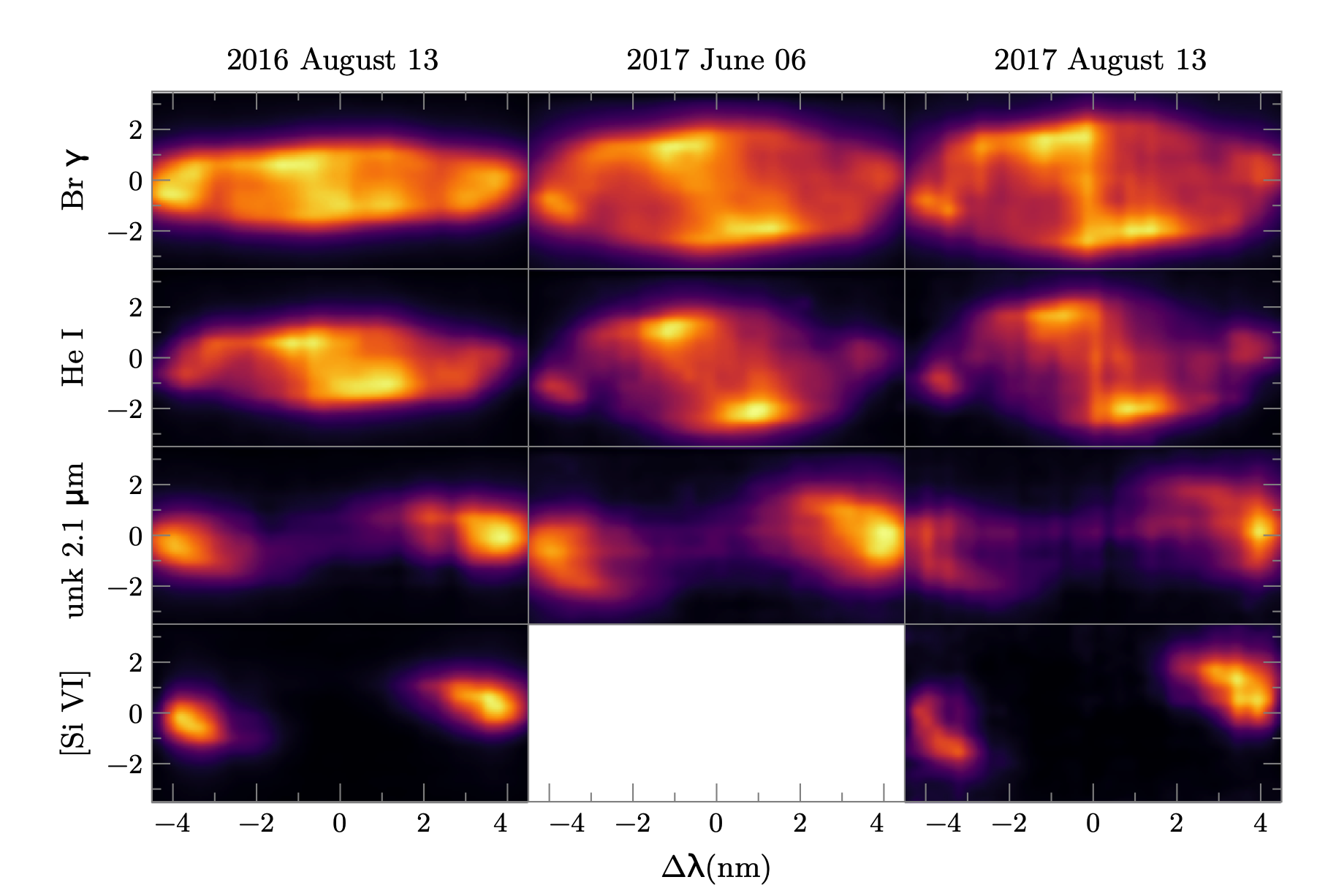Larissa Takeda: Analysis of gas and dust on nova shells
Thursday, 29 June 2023 2 p.m. — 3 p.m. MST
Your time:

Gemini North Hilo Base Facility | 670 N A’ohoku Place Hilo, Hawaii, 96720, USA

Classical novae are thermonuclear eruptions on the surface of an accreting white dwarf. As the ejected gas expands and cools down, the ionized shells can be observed with high angular resolution instrumentation and within a few years of the nova event. The analysis of the expanded shells provides information about the white dwarf and the explosive event, since the quiescent spectra are dominated by the companion star's gas in the accretion disc. Different nova explosions may vary in geometry, composition, and physical properties, including dust formation, resulting in a broad range of observed transitions and spectral line profiles. The consistent presence of emission lines with different ionization energies in the same spectrum suggests non-uniform gas distributions within the shells. Even though the 3D treatment of nova shells has been proved to be a key feature to understand the physical and chemical properties of novae, most of the models and analysis in the literature are uni-dimensional. We will present OSIRIS and NIRC2 data of the dusty novae obtained in different epochs of the nova's evolution, along with 3D photoionization models to provide more accurate constraints on the physical and chemical parameters of both gas and dust in nova shells.
For Zoom connection information, please contact Emanuele Paolo Farina (emanuele.farina_at_noirlab.edu).
Back to Gemini north talks.